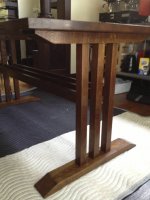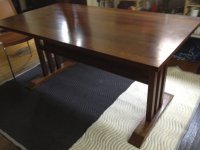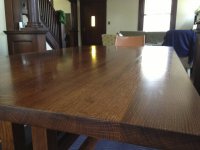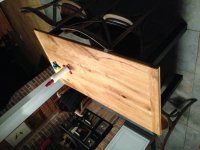Hello.
I would like to make a breadboard style table top, roughly 30" x 84" x 2". I do not have the capability or desire to mill my own lumber, so I'd like to stick to product already milled for me. I was wondering if there's another wood that can stand the abuse of a breakfast table and usually costs a lot less than oak. The top would likely be stained with a semi-transparent white, with just a little grain showing. Would poplar be a good choice? Anything else? Thanks!
I would like to make a breadboard style table top, roughly 30" x 84" x 2". I do not have the capability or desire to mill my own lumber, so I'd like to stick to product already milled for me. I was wondering if there's another wood that can stand the abuse of a breakfast table and usually costs a lot less than oak. The top would likely be stained with a semi-transparent white, with just a little grain showing. Would poplar be a good choice? Anything else? Thanks!




